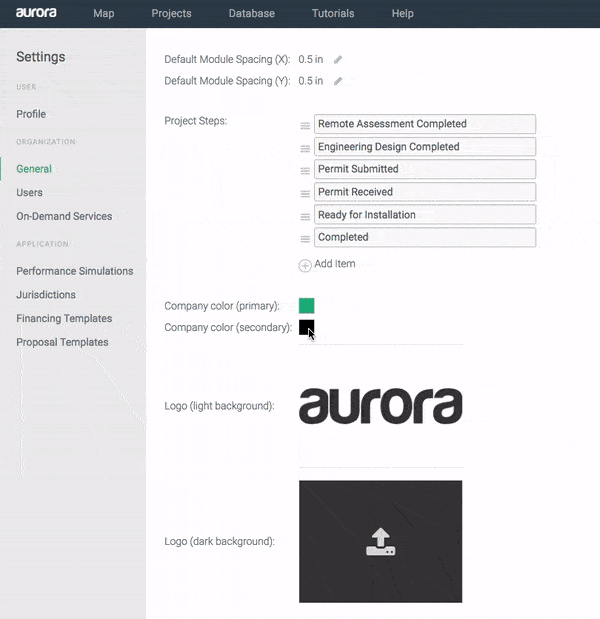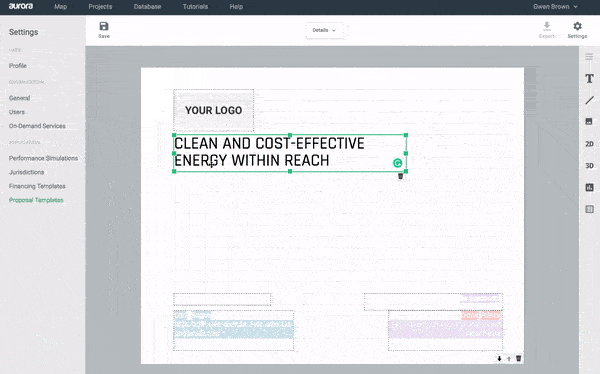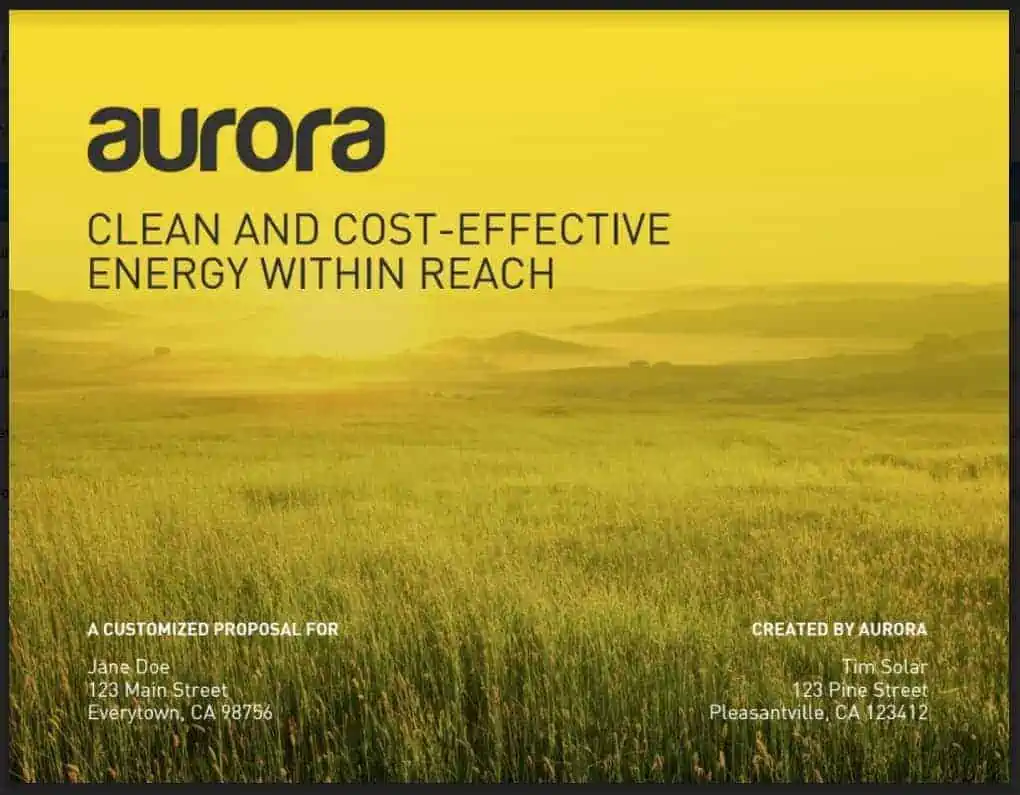You know it’s critical that your solar sales proposals are compelling. After all, they are the tangible communication of why a customer should choose your company to install their solar system. But it’s not enough just to know what makes a proposal effective—you also need an efficient process for developing them. With a nimble proposal creation process, you’ll have more time for talking to customers and other aspects of your day-to-day work.
Templates are an indispensable tool for streamlining your proposal development process. By standardizing certain elements of your proposals, templates make it easy to ensure your proposals are professional and consistent. In today’s article, we share some of the ways you can use templates to make creating the perfect proposal a seamless process.
Aurora’s proposal tools make it easy for companies to create beautiful and flexible templates, and in this post we’ll highlight some of the ways Aurora customers can get the most out of those features. Even if you’re not an Aurora customer, however, incorporating these strategies in your proposal templates—in whatever program you use—can help you put your best foot forward without reinventing the wheel every time you prepare a quote for a prospective client.
[Note: Changes to company proposal templates in Aurora need to be implemented by the administrator of your account. We recommend each company take a little time to set up their proposal templates since it will save time on every solar sale.]
1. Standardize company branding
Sales proposals are a key way that your company presents itself to prospective customers. As such, you want to make sure that all of the visual elements of your solar company’s brand—like fonts, colors, and your logo—are consistent with your company’s image elsewhere (website, ads, brochures, etc.).
Standardizing these elements in your solar sales proposal templates will save you and your team time by eliminating the need to make manual adjustments. (A few minutes for each proposal can really add up!) It will also ensure that errors and inconsistencies aren’t introduced.
 Aurora users can customize elements of company branding like colors and logo. For an overview of how to do this, see Configuring Your Account in our Help Center.
Aurora users can customize elements of company branding like colors and logo. For an overview of how to do this, see Configuring Your Account in our Help Center.
2. Standardize the information included in your proposals
In the process of talking with customers, chances are you’ve learned a lot about what information to include in your proposals based on customer priorities and the kinds of questions you often receive. Using templates to standardize the details included in each proposal, and the format that information is presented in, ensures that your proposals always meet your standards.
Additionally, your template should ideally be set up so that it easily pulls in all of the information you’ve already prepared, such as design and financing details. Aurora has made this easy by providing a plethora of different placeholders to fit each company’s needs—from cash flow charts to lists of components to desired images. One of the best things about these placeholders is that they automatically populate with the relevant information about your design, such as 2D and 3D images of the system and financing information based on the different scenarios you’ve modeled.
 Aurora provides a wide array of placeholders that can be added to proposal templates. Each of these fields will automatically pull in the relevant information from your solar project. For a detailed overview of how to customize proposals with desired placeholders in Aurora, see our Help Center.
Aurora provides a wide array of placeholders that can be added to proposal templates. Each of these fields will automatically pull in the relevant information from your solar project. For a detailed overview of how to customize proposals with desired placeholders in Aurora, see our Help Center.
3. Don’t start from scratch
While you want your templates to be tailored to your processes and brand, that doesn’t mean you have to start from scratch when creating them. In Aurora, we provide several proposal templates created by professional designers which you can copy and modify as needed. That could mean adding additional pages with other information, replacing images (including background images), or customizing the language.
Similarly, if you’re using another tool for creating proposals, you may want to draw from existing company materials when creating your proposal template, such as using imagery from brochures or pulling in your company’s origin story from your website. Not only will this save time, it will also help you maintain consistency in your communications.
 Aurora users can utilize several customizable proposal templates created by professional designers (cover of one shown above). Even if you’re not using Aurora, chances are you have existing company materials that can make creating a proposal template easier.
Aurora users can utilize several customizable proposal templates created by professional designers (cover of one shown above). Even if you’re not using Aurora, chances are you have existing company materials that can make creating a proposal template easier.
4. Bonus: Create a variety of templates to suit different customer priorities
Having one template is a great start, since it will save time for your team members every time they put together a quote. However, an effective proposal should highlight the details that a customer cares about. That means, depending on the client, you may want to focus on different aspects of the proposed system.
For instance, you might want to devote more of the proposal to explaining different financing options if you know a particular customer is very focused on that. Or, you could have a proposal with more detail on the components you’ll use and why if a client is especially interested in the technology used in their system.
You can take your proposal creation to the next level by creating a couple of templates for different scenarios, giving your team the flexibility to quickly create the perfect proposal for every solar sales lead.
As the solar industry becomes more competitive, it’s important to put in place processes that allow you to achieve the same results with less time and effort. Fortunately, there are a lot of technologies that can help—from saving truck rolls by using remote site assessment software, to automating the PV design process, to proposal generation tools. The use of flexible proposal templates, especially if they pre-populate with information about your project design, is another valuable tool for streamlining your solar sales process and bolstering your bottom line.